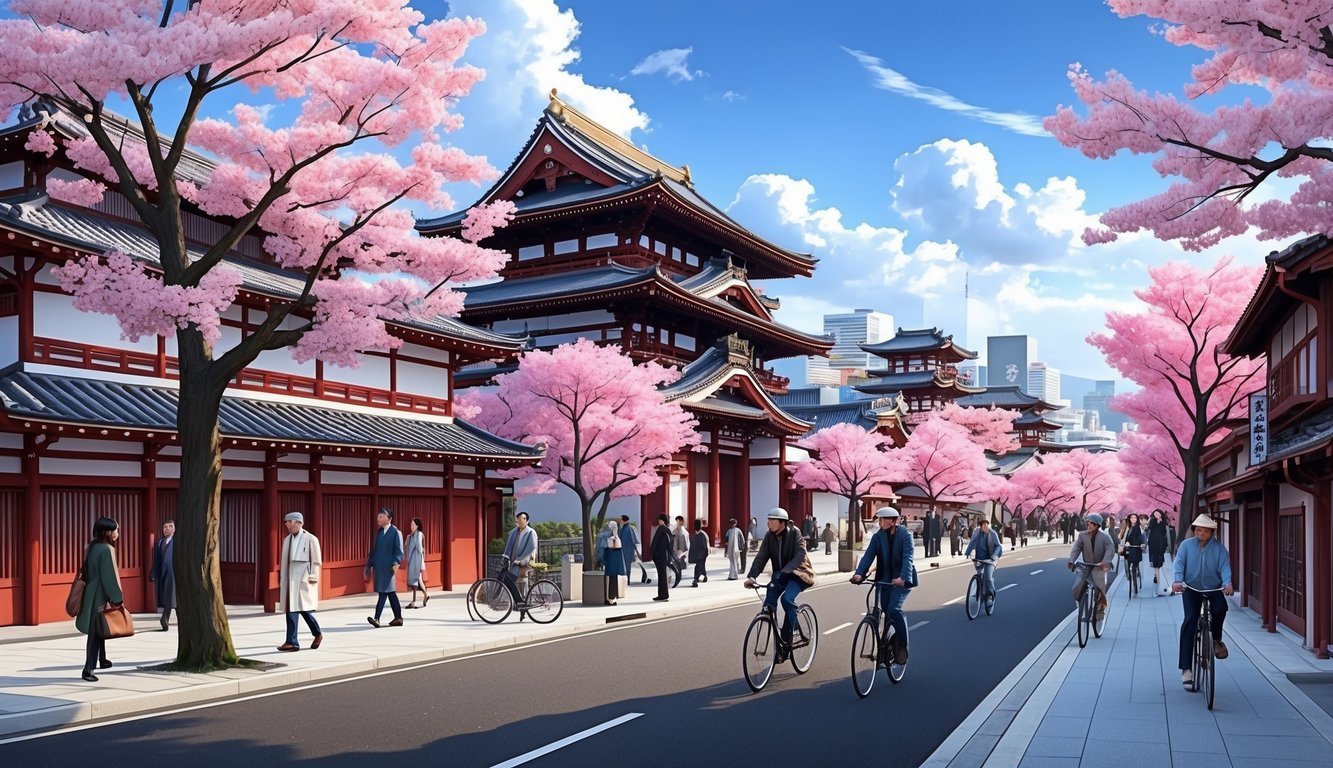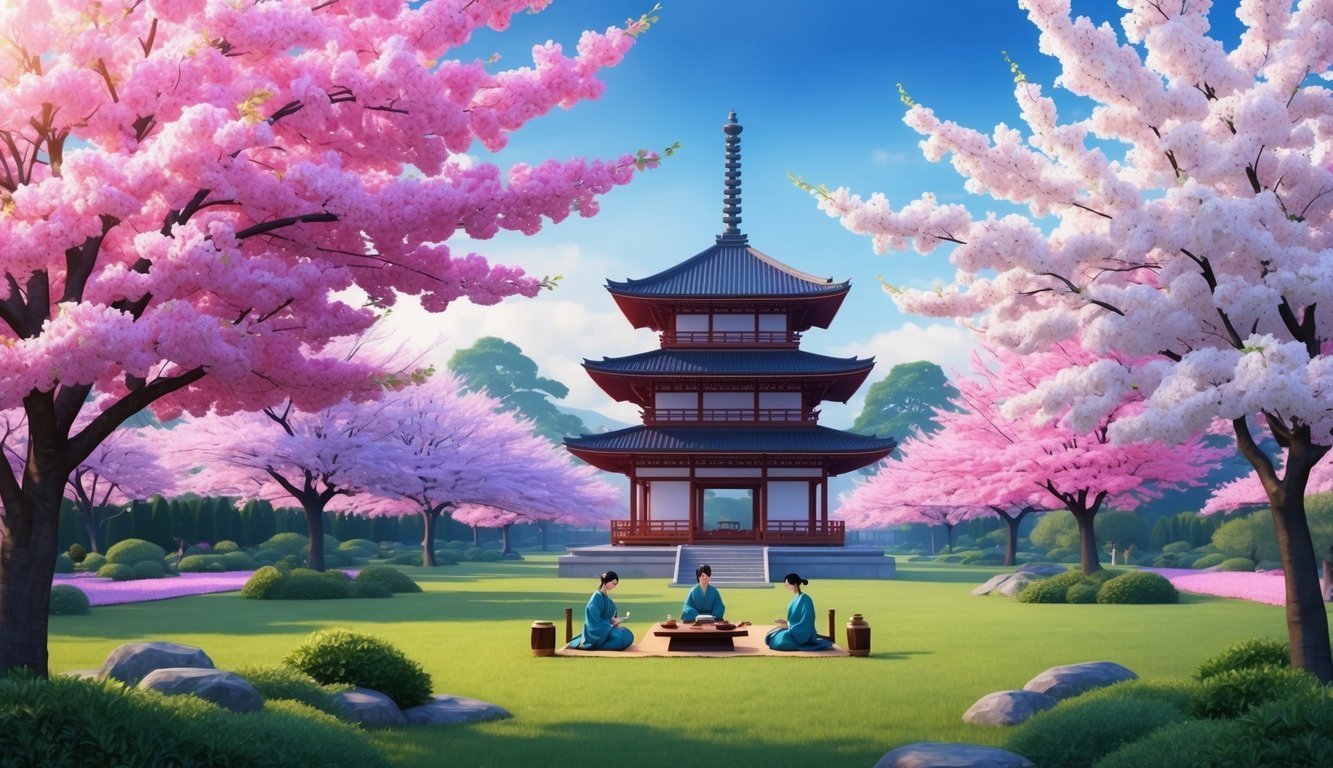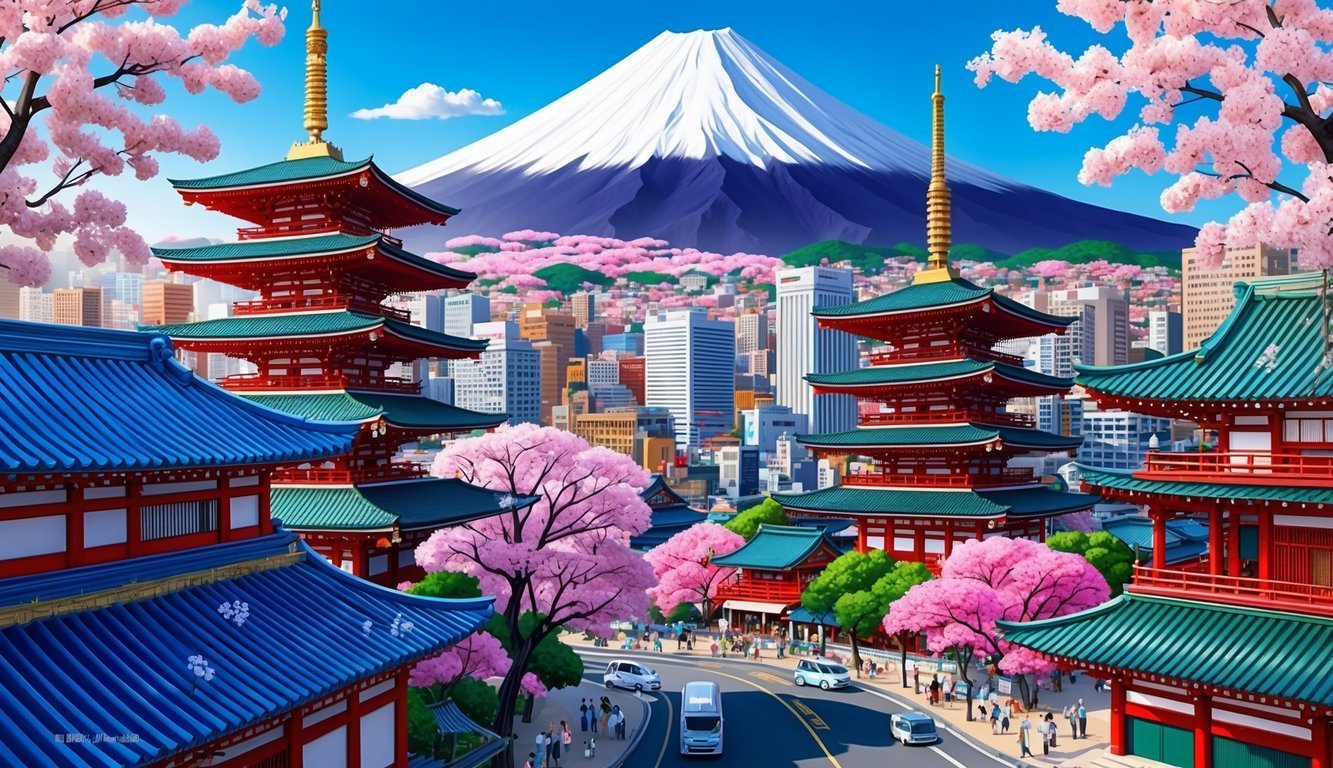Japan offers a unique blend of ancient traditions and modern marvels, making it a dream destination for many travelers. Finding the best itinerary for Japan can help you make the most of your trip, ensuring you experience its vibrant cities, breathtaking landscapes, and rich culture.
Whether you’re a first-time visitor or returning for another adventure, a well-planned itinerary can guide you through the highlights.
From bustling streets in Tokyo to serene temples in Kyoto, you’ll discover experiences that cater to all interests and tastes.
Cultural Etiquette in Japan
When you visit Japan, understanding cultural etiquette is essential.
Knowing the do’s and don’ts, as well as a few key phrases, can enhance your experience and help you connect with locals.
Do’s and Don’ts
In Japan, following customs shows respect.
Here are some important do’s and don’ts to keep in mind:
Do:
- Bow when greeting or thanking someone. It’s a sign of respect.
- Use two hands when giving or receiving items, especially business cards.
- Keep quiet on public transport. Talking loudly is frowned upon.
- Take advantage of public transport. It’s efficient and eco-friendly.
Don’t:
- Point or gesture with your finger. Use your whole hand instead.
- Blow your nose loudly in public. It’s considered impolite.
- Eat while walking. Enjoy your food at designated areas.
- Jaywalk. Follow pedestrian signals and crosswalks.
Key Phrases to Know
Learning some basic Japanese phrases can go a long way.
Here are a few to help you navigate conversations:
- Arigato gozaimasu (ありがとうございます) – Thank you very much.
- Sumimasen (すみません) – Excuse me or I’m sorry.
- Konnichiwa (こんにちは) – Hello.
- Kanpai (乾杯) – Cheers, used when clinking glasses.
Using these phrases shows that you respect their culture.
People appreciate even a little effort to speak their language.
Getting Around

Japan has a fantastic transportation system that makes getting around easy and convenient.
Whether you prefer public transport or renting a car, there are great options to consider for your travels.
Navigating Public Transport
Japan’s public transport is world-renowned for its efficiency and punctuality.
The Shinkansen, or bullet train, is a must-try.
It connects major cities at high speeds and is comfortable and safe.
To navigate, you can use the Japan Rail Pass if you plan to travel extensively.
It offers unlimited rides on most trains for a set number of days.
Major cities have excellent subway and bus systems, such as Tokyo’s Toei Subway and Osaka’s Subway System.
Apps like Google Maps and HyperDia can help you plan your routes.
You’ll also find signs in English, so you won’t get lost easily.
Always check train schedules, especially late at night when some lines may close.
Tips for Renting a Car
Renting a car in Japan can be a good choice if you want to explore rural areas or visit places not easily accessible by public transport.
Major cities like Tokyo and Osaka have rental agencies, and it’s recommended to book in advance.
Be aware that you need an International Driving Permit to drive in Japan.
Roads are well-maintained, but you should familiarize yourself with the local driving laws, such as driving on the left side.
Parking can be challenging in busy areas, so look for public parking lots or hotel garages.
They often charge a fee, so have some yen handy.
If you plan to visit popular spots, ensure you understand toll systems as they can add to your travel costs.
Seasonal Tips for Your Visit

Japan offers unique experiences throughout the year.
Knowing the best times to visit and what to expect in terms of weather can help you plan an enjoyable trip.
Best Time to Visit
Spring (March to May) is famous for cherry blossoms.
Peak bloom usually happens in late March to early April, making this a stunning time to explore parks and gardens.
You can enjoy hanami parties, where locals picnic under the blooming trees.
Summer (June to August) can be hot and humid, especially in cities like Tokyo.
However, summer festivals, or matsuri, bring vibrant celebrations.
Expect plenty of fireworks shows and local food stalls.
Autumn (September to November) is a fantastic time for fall foliage.
The colors change from late October to early November.
This is ideal for sightseeing in places like Kyoto, where the temples look especially beautiful.
Winter (December to February) can be cold, particularly in northern Japan.
Still, it’s a great season for snow sports in regions like Hokkaido.
If you’re looking for winter illuminations and festive markets, visiting in December is perfect.
Weather Considerations
When planning your visit, consider Japan’s varied climate.
Coastal areas are typically milder, while mountainous regions can see heavy snowfall.
Spring: Mild temperatures range from 50°F to 65°F (10°C to 18°C).
Pack layers for cooler evenings.
Summer: Expect highs around 85°F (30°C).
Don’t forget sunscreen, a hat, and stay hydrated.
Autumn: Temperatures range from 50°F to 70°F (10°C to 20°C), making it perfect for outdoor activities.
Bring a light jacket for chilly evenings.
Winter: Bundle up as temperatures can drop to 30°F (-1°C) or lower in some areas.
If you plan to ski, ensure you have proper gear.
Frequently Asked Questions
Traveling to Japan raises many common questions.
Here are some specific answers that can help you plan your trip better.
How can I make the most out of a 10-day trip to Japan?
To maximize your 10-day trip, create a balanced itinerary.
Spend a few days in major cities like Tokyo and Kyoto, then visit nearby attractions like Hiroshima or the Fuji Five Lakes.
Make use of the Japan Rail Pass for convenient travel.
What are the top destinations to visit in Japan for a first-timer?
For first-time visitors, Tokyo, Kyoto, and Osaka are must-see destinations.
In Tokyo, explore Shibuya and Asakusa.
Kyoto is famous for its temples like Kinkaku-ji.
Osaka offers delicious street food and attractions like Universal Studios.
For a two-week stay, what must-see spots should I include in my Japan itinerary?
While in Japan for two weeks, be sure to include Tokyo, Kyoto, and Osaka.
Add Hiroshima for its history and Nara for its friendly deer.
Consider visiting Hokkaido for nature or Okinawa for beaches.
Each stop offers unique experiences.
Can you suggest a family-friendly itinerary for exploring Japan over 7 to 14 days?
For families, start in Tokyo, where kids can enjoy Disneyland and unique museums.
Next, head to Kyoto for cultural sites like temples and gardens.
You can also visit Osaka for Universal Studios.
Always include some downtime for rest.
What’s a realistic daily budget for a tourist visiting Japan?
A realistic daily budget for Japan ranges from $100 to $300.
This includes accommodation, food, transportation, and activities.
Staying in hostels or budget hotels can help keep costs down.
Eating from convenience stores can also save you money.
How many days should I spend to have a fulfilling experience in Tokyo and Kyoto?
You should spend about 4 to 6 days in Tokyo and 3 to 5 days in Kyoto.
This will give you a fulfilling experience.
In Tokyo, explore neighborhoods and attractions.
In Kyoto, take time to visit historic sites and enjoy traditional foods.

